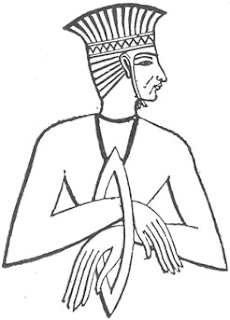Fetters, Egyptian Type
The fettered prisoner in this Egyptian picture is probably Philistine or Phoenician, judging by his headdress. This is more of a symbolic representation than an actual drawing of a fettered prisoner since the fetters as shown would be incapable of restraining the man’s hands. Such a rendering would signify subjugation or defeat and was not intended to portray photographic accuracy.
Ps 105:16–18, Isa 28:21–22, Nah 3:10

Comments